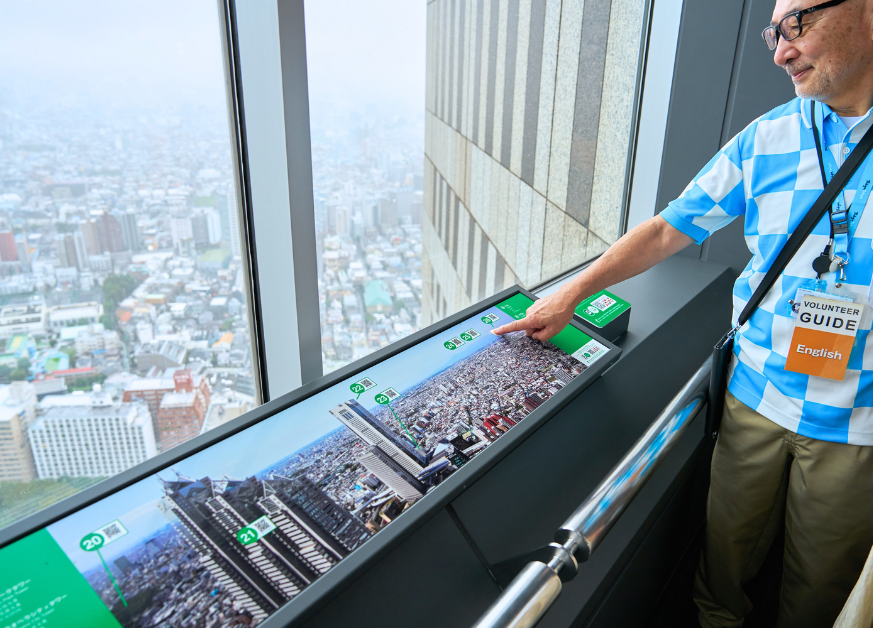
The Tokyo skyline brims with skyscrapers piercing the sky across a seemingly endless concrete sprawl. While there may be no end of observation decks, penthouse bars, and top-floor restaurants throughout this bustling city, there is no other feeling quite like that of looking down on the urban landscape from the 45th floor of the Tokyo Metropolitan Government Building.
Exploring the Tokyo Metropolitan Government Building
This grand, gothic high-rise is the beating heart of Tokyo: it is where city governor Yuriko Koike’s office is located and where policymakers debate and discuss the future of Japan’s capital city in a grand assembly hall. One may tend to think of government spaces as off-limits and shrouded in secrecy, but the Tokyo Metropolitan Government Building welcomes visitors, even going a step further and providing free volunteer-guided tours of the facility. Available in English, Chinese and Korean, these fascinating deep dives are the perfect chance to learn more about the city and interact with friendly and knowledgeable local guides.
So, it was with this in mind that on a cold, rainy day in October, I headed over to the Tokyo Metropolitan Government Building to try their famous tours, the Tokyo Metropolitan Government Building Information/Guide Service and the Observation Deck Guide Services. No reservations are required for these particular guided excursions, making them the perfect spontaneous Tokyo sightseeing activity.
Service with a smile: Japanese hospitality at its finest
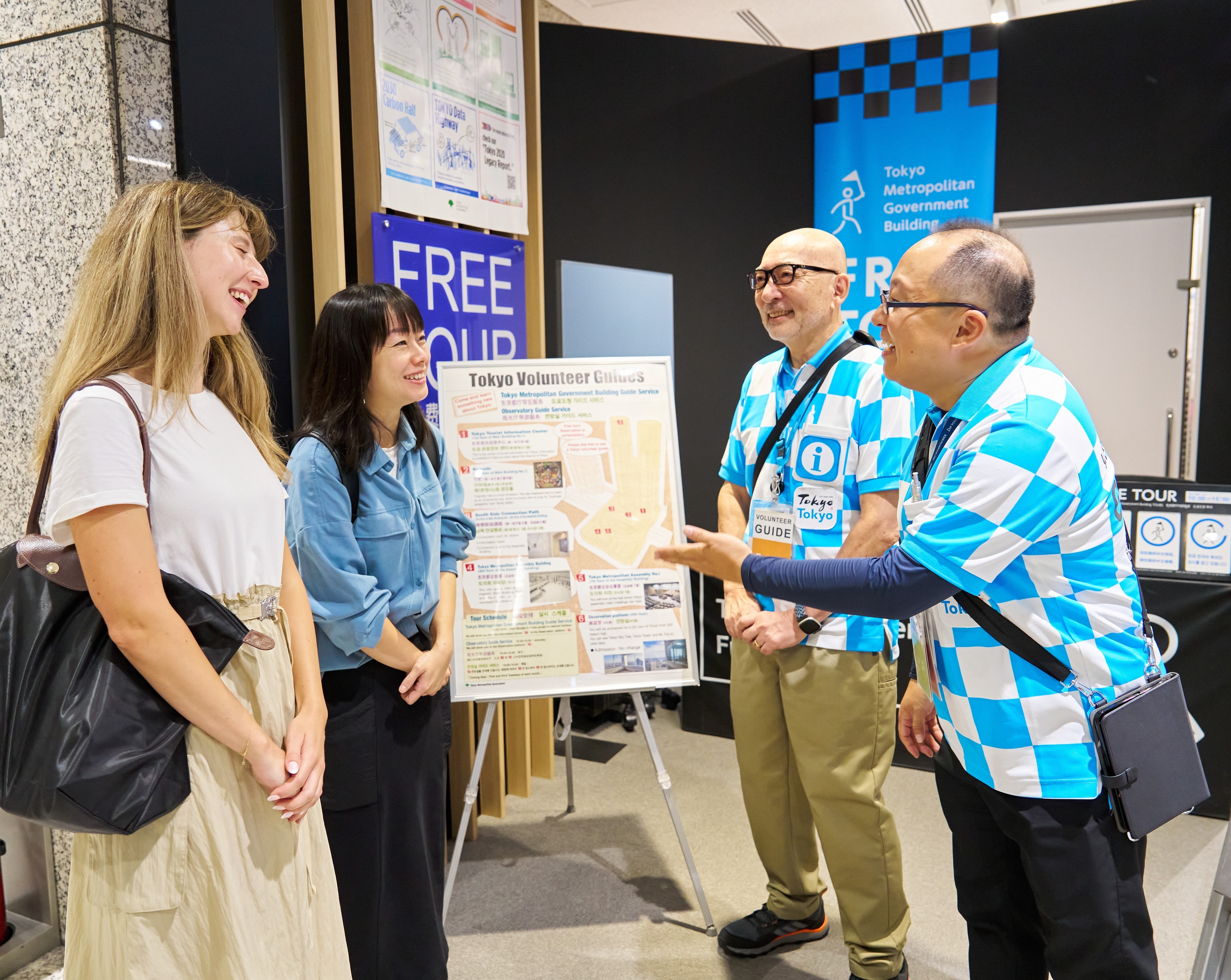
The volunteer guides all greet visitors with a smile and their best omotenashi Japanese hospitality, going above and beyond to introduce the must-see spots in this important government hub. The popular 40-minute tour begins at the welcoming front desk of the Tokyo Tourist Information Center, easily recognizable by the volunteer’s signature blue and white checked uniform.
I soon found an English-speaking tour guide, who was easy to spot thanks to a lanyard around his neck proclaiming “English” in big red letters. He introduced himself as Ueda-san, a retired tech worker from western Tokyo who had started working as a volunteer guide soon after the pandemic. He carried a binder with him full of his own photography and supplementary research about the building. I noticed that his Chinese-speaking colleague also had a well-used Tokyo guidebook full of his own notes and citations under his arm. That’s the thing about Japan: even volunteer workers go the extra mile to create the best customer experience.
History, culture and inside experiences
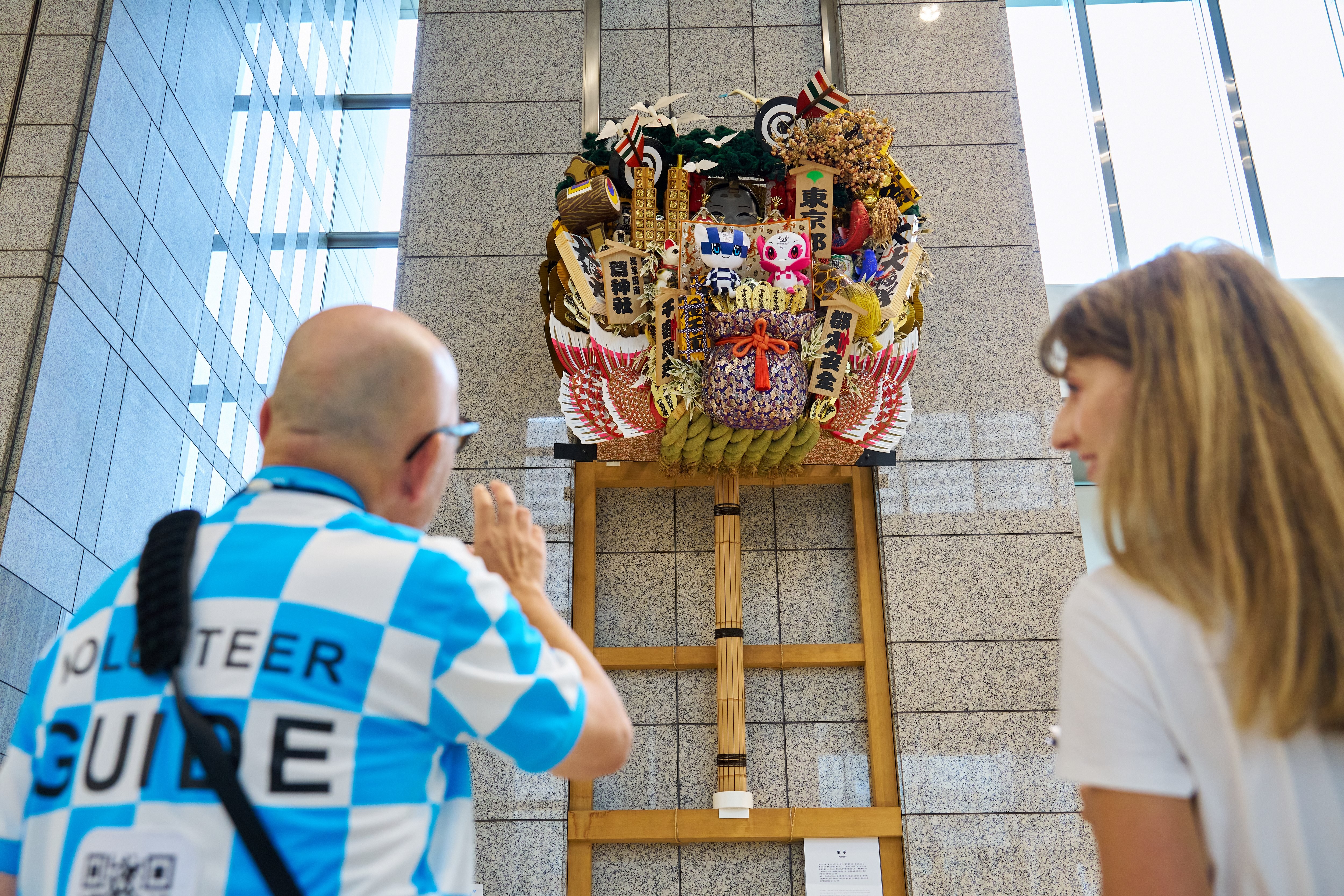
We started our tour of the building in front of the impressive kumade ornament displayed on the second floor. Ueda-san explained that these traditional good luck charms are believed to bring prosperity and business success. He shared fascinating insights into the history of kumade culture that I would not have had the chance to know otherwise.
After that, Ueda-san led me to the impressive Citizen Information Room, while we chatted together about our shared experiences. It felt great to talk with a real Tokyo local, like a hidden insight into an authentic part of the city that tourists and non-Japanese speakers may not usually get the chance to experience.
A harmony of art and politics
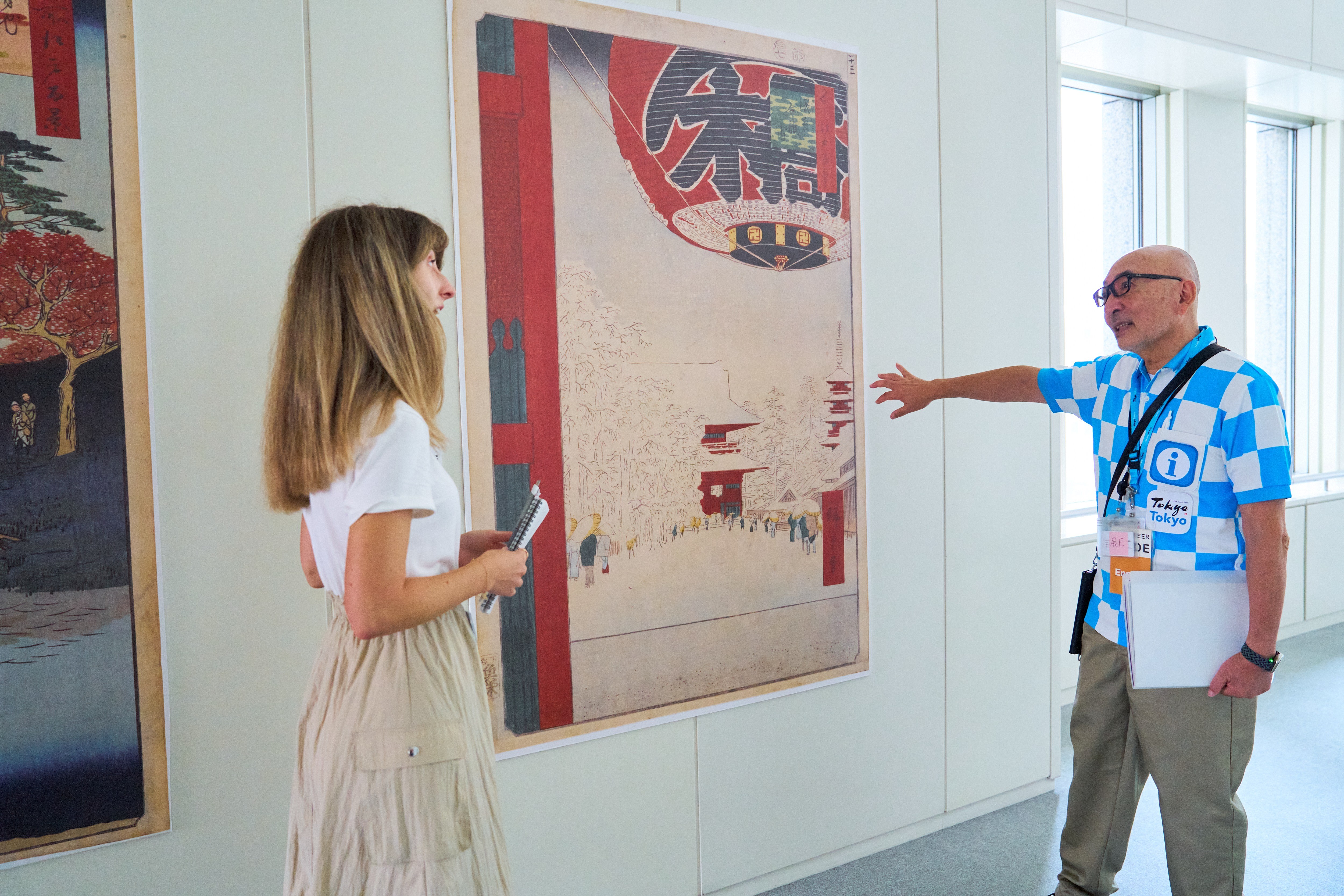
We strolled through the huge open corridors towards the Tokyo Metropolitan Assembly Building, occasionally stopping to look at and discuss art pieces that caught my eye. It may come as a surprise to hear that the Tokyo Metropolitan Government Building is full of iconic artworks, ranging from huge abstract sculptures to award-winning traditional calligraphy. It really is an ideal location for art lovers as well as history and culture buffs.
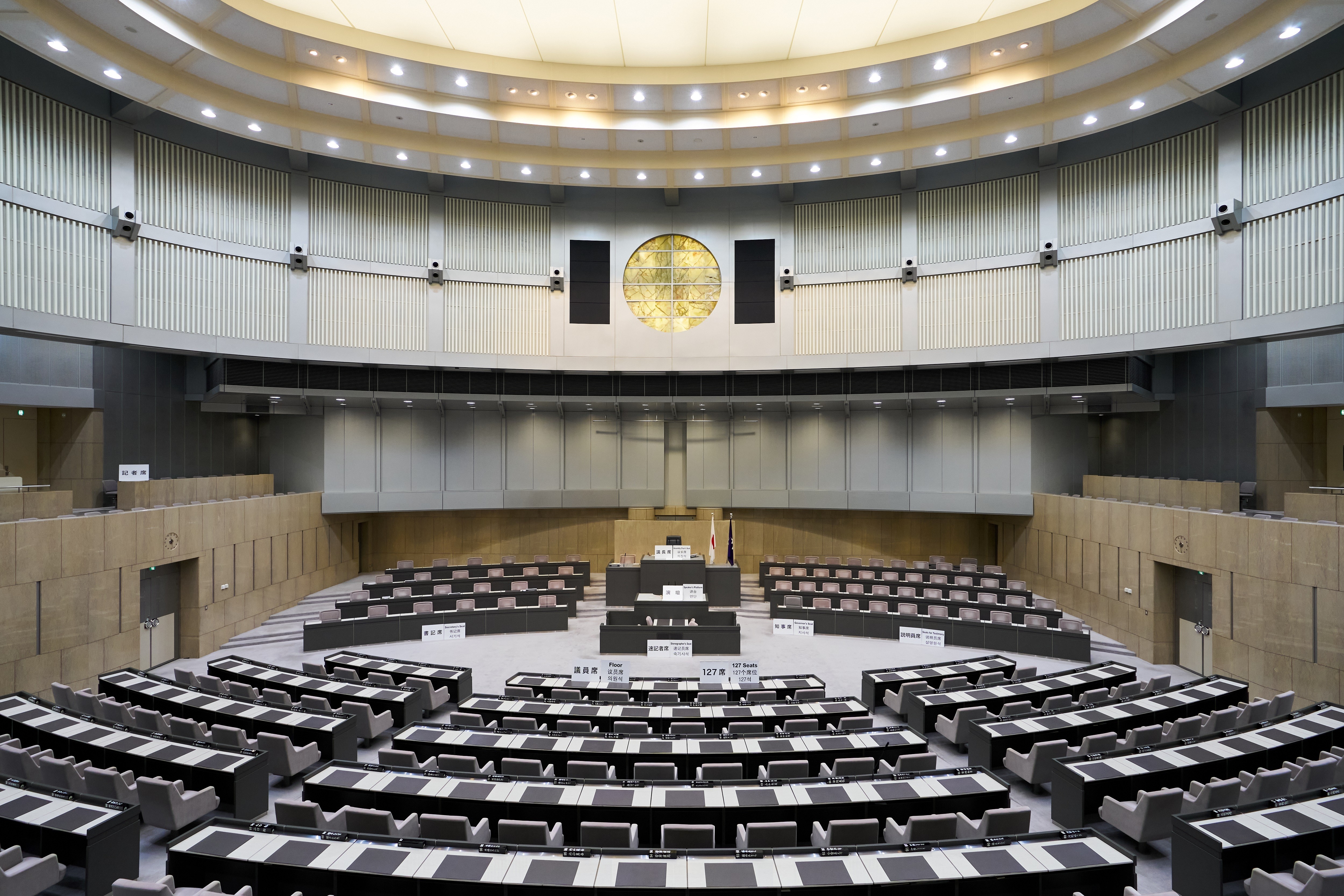
We then entered the assembly hall, where the Tokyo governor and Tokyo Metropolitan Assembly enact prefectural ordinances that mold the future of the capital. The flag of Japan and the flag of the Tokyo Metropolis stood proudly side by side, just next to the assembly president’s chair. It was a surreal experience to be inside the very core of Tokyo’s policy-making center; despite being empty except for an idle TV camera, it was still buzzing with bureaucratic energy.
An unmissable projection mapping show
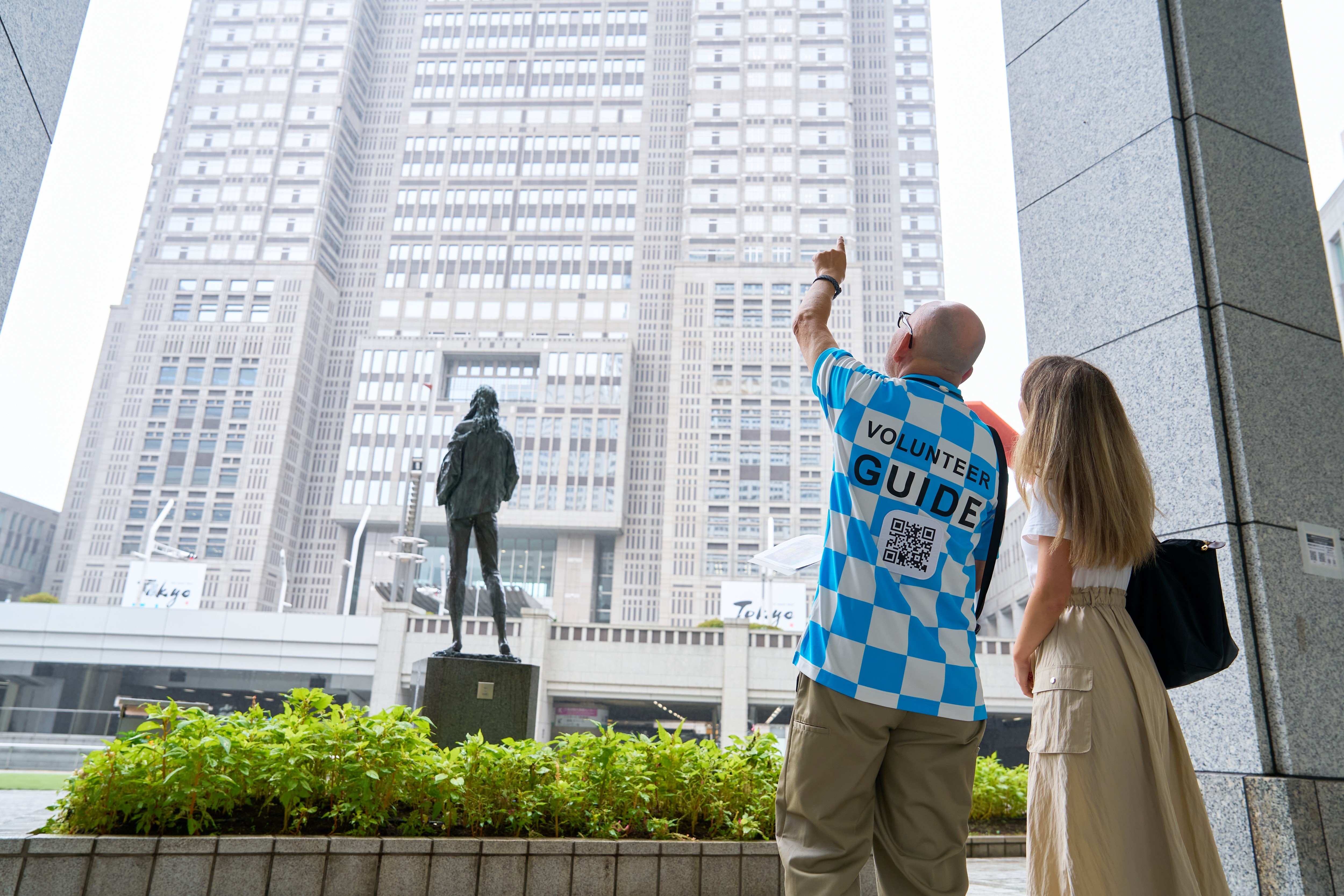
Our next stop was Tokyo Prefecture Hall Civic Plaza, a wide, open modernist square with comfortable benches and lawn space. Ueda-san told me that this was the best spot to watch the amazing Tokyo Night & Light projection mapping show, which decorates the side of the building in a flurry of color every night after sundown. I made a mental note to come back later after dark.
https://tokyoprojectionmappingproject.jp/en/event/20240225/
Looking down over the vast cityscape of Tokyo
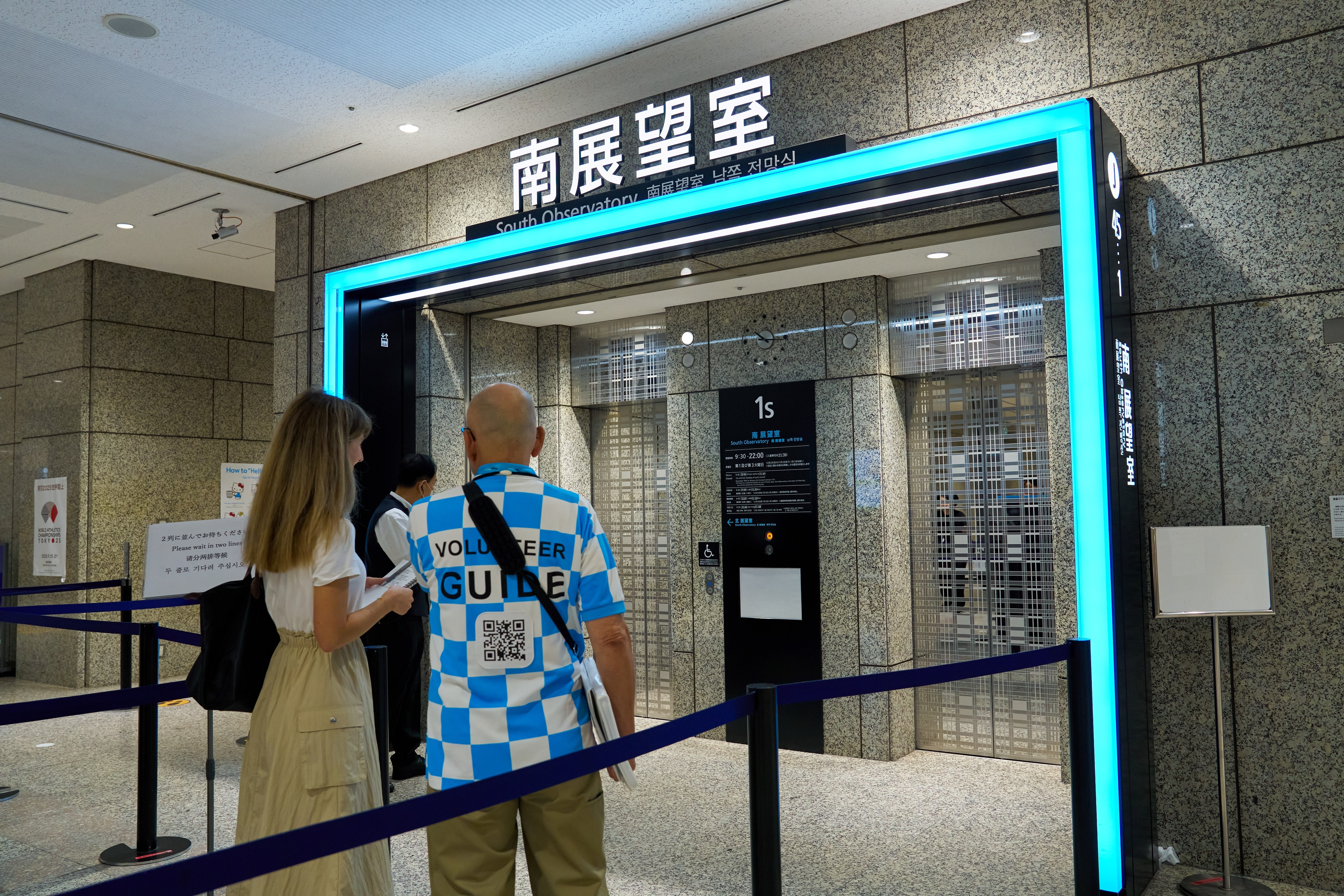
Finally, we arrived back at the lobby to ride the elevator 202 meters up to the south observatory. The observatory is the pièce de resistance of the tour and the moment everybody looks forward to. As soon as the elevator doors opened, my ears were filled with soft jazz; a talented passerby was playing the beautiful Yayoi Kusama grand piano, which sits in the center of the room for anybody to play.
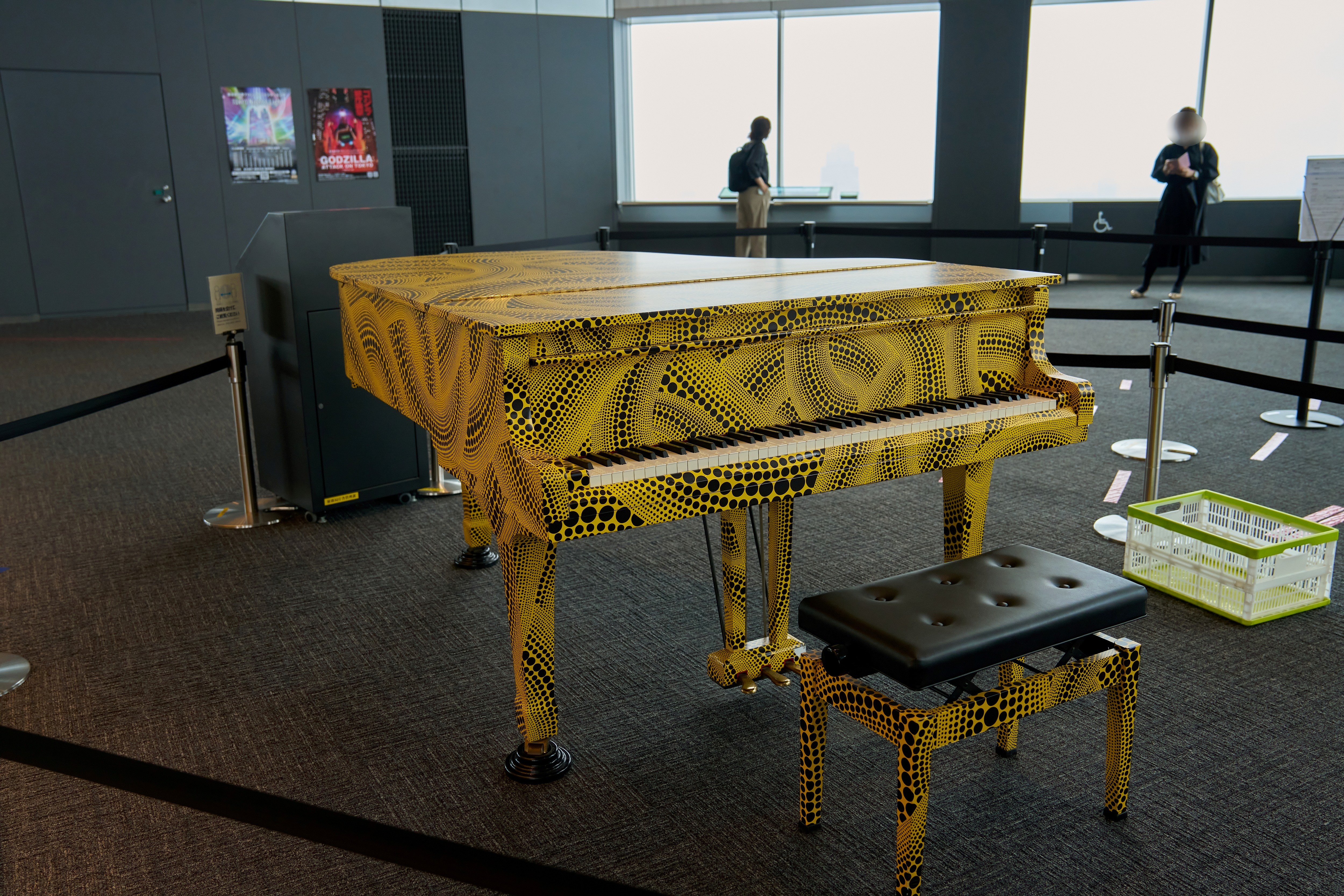
Although the rain meant we couldn’t see as far out over Tokyo as we would have liked, Ueda-san still pointed out all the major landmarks and regaled me with interesting facts and stories. Having a local guide add context to the scenery gave me a whole new perspective and was invaluable to my trip.
A thought-provoking farewell
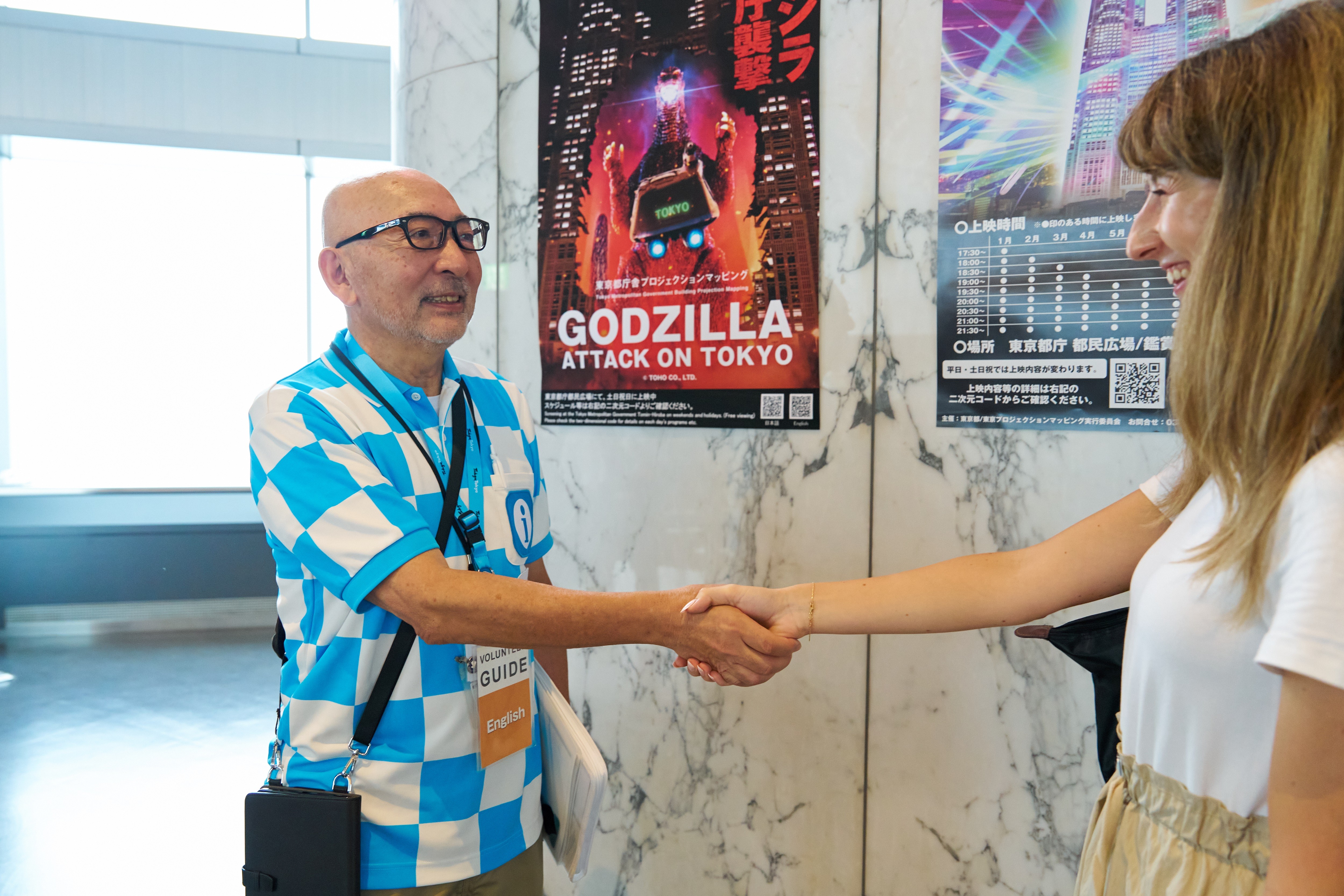
Before I knew it, it was time to say our farewells. My experience had been full of omotenashi hospitality from start to finish, and the 40 minutes seemed to fly by. I left feeling excited and fulfilled, ready to go out into the city and enjoy another day of endless possibilities. After all, that’s what Tokyo is all about.
About Tokyo Volunteer Guides
Tokyo Metropolitan Government Building guided tours are available on weekdays on a first-come-first-served basis from the first floor Tokyo Tourist Information Center offices in the Tokyo Metropolitan Government Office Building. (Tours are unavailable on weekends, New Year’s holidays and during building inspections.)
The reception is open from 10 a.m. until 3 p.m. (last entry at 2:20 p.m.)
Tours are available in English, Chinese and Korean, but tours in your chosen language may not always be available.
The Tokyo Metropolitan Government also offers a selection of sixteen free and low-cost guided walking tours of the city in English, French, German, Italian, Spanish, Chinese and Korean. (Reservations required: Tour Guide Services by Tokyo Volunteer Guides)
These walking tour routes offer a glimpse into Tokyo’s unique traditions and culture, as told by expert locals. Find your favorite from the list below and enjoy getting to know this incredible city!
Route 1: Strolling in Gardens and Experiencing a Tea Ceremony
Route 2: Shinjuku, the center of Tokyo. Learn about Japan's trends in department store basements and while shopping
Route 3: The Asakusa Route
Route 4: Ryogoku, a town of Sumo with the Atmosphere of Edo
Route 5: The East Gardens of the Imperial Palace and the Outer Garden
Route 6: Thirty minutes from Shinjuku; Journey to Enjoy History and Nature
Route 7: View the Tokyo metropolis from new angles: the sky and the sea
Route 8: Exploring Streets and a Shrine of Harajuku
Route 9: Streetscapes in Japan and an Oasis in Central Tokyo
Route 10: Modern Japanese Architecture and Tour of the National Diet Building
Route 11: Introduction to Japanese Gardens, Tea, Food, Craftsmanship, and Japanese Culture
Route 12: Experience rich nature, the mountain, and the Japanese spirit at Mt. Takao
Route 13: Visit Places of Spiritual Calm of Temples, Nature, Sophisticated Streets, and the Japanese Spirit
Route 14: Accessible Tour Guide Service
Route 15: Shinjuku Night Tour
Route 16: Asakusa Night Tour
Be sure to follow the Tokyo Volunteer Guide Facebook page to get the latest tourist information!
https://www.facebook.com/TOKYOVOLUNTEERGUIDE
Tokyo Metropolitan Government Building Information / Guide Service
https://www.gotokyo.org/en/guide-services/government-building-guide-services/index.html
Observation Deck Guide Services
https://www.gotokyo.org/en/guide-services/observation-deck/index.html

Comments